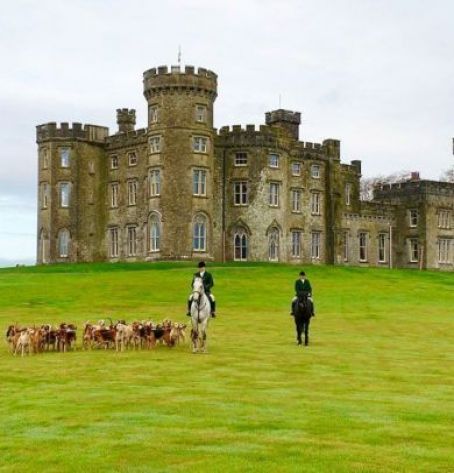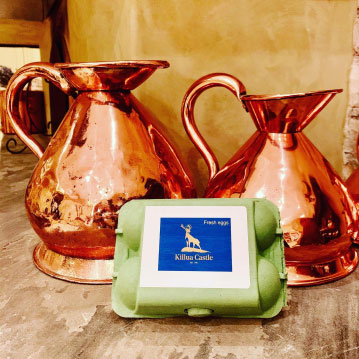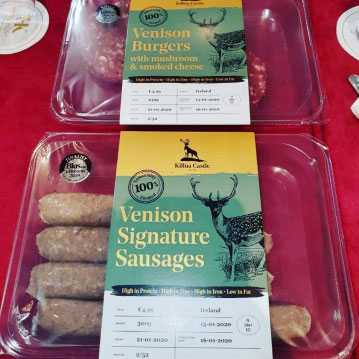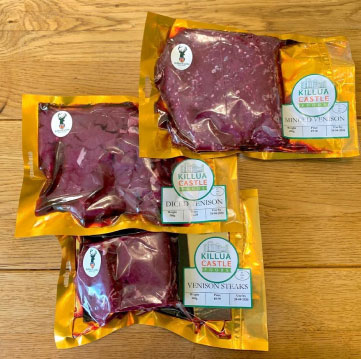
ABOUT THE CASTLE
A Historic house in Co. Westmeath
Killua Castle was formerly the seat of the Anglo-Irish Chapman family, a hugely wealthy dynasty with links to both Sir Walter Raleigh and T.E. Lawrence.
The estate, first granted to Captain Benjamin Chapman in 1657, was payment for services he rendered to Oliver Cromwell during the Conquest of Ireland. It was believed that Captain Benjamin built an original house that was subsequently pulled down to make way for the castle. However, a recent discovery of a coin hoard predating 1650 suggests that a family or structure may have been present prior to his arrival.

It was Captain Benjamin’s great-grandson, Sir Benjamin, 1st Baronet who built the first incarnation of the existing house in 1784, a grand Georgian mansion designed by Thomas Cooley (known for his works at the Royal Exchange, Dublin). Sir Benjamin was an MP in the Irish House of Commons, a young firebrand more than willing to settle political disputes with duelling pistols. He tempered his early zeal, and was rewarded with a baronetage in 1782, the highest rank of knighthood. The family history was also burnished with a romantic notion of kinship to Sir Walter Raleigh. It was claimed that the first Chapman to arrive in Ireland, John Chapman of Leicestershire, was a first cousin to Sir Walter.
Further legends arose that Killua was obtained through Sir Walter’s influence, and indeed that the Raleigh monument on Killua’s grounds (installed by Sir Thomas, 2nd Baronet in 1836) marked the very spot where Raleigh first implanted the potato into Irish soil. Alas, Sir Walter had been executed long before Captain Benjamin received his grants in Westmeath.
It is at least possible that John Chapman (d. 1613) was distantly related to Raleigh’s mother Catherine Champernowne. In contemporary records, John was described as “a man of Sir Walter Rawley’s,” which suggests that he may have been a soldier in his company.

Sir Benjamin died without issue in 1811, and the house (known then as St Lucy’s) passed to his brother Sir Thomas, whose gallant career in the Napoleonic Wars ended in ignominy and court-martial. It was Thomas who transformed the Georgian manor house of St Lucy’s into the neo-baronial Killua Castle, with plans by architect James Shiel.
Sir Thomas’s son Sir Montagu, 3rd Baronet was tragically drowned in the Tasman Sea while visiting estates in Australia. His brother Sir Benjamin James, 4th Baronet was a collector of furniture, art, and historical artefacts, and his ‘museum’ at Killua Castle held items of international significance. The fifth baronet Sir Montague Richard was a gay huntsman and benevolent landlord who died of pneumonia in 1907. His brother Sir Benjamin Rupert, 6th Baronet was charitably described by some as an eccentric, but in reality he suffered from mental illness, and management of the estates was entrusted to Lady Caroline Chapman, wife (and cousin) of Sir Montague Richard.
Upon the death of Sir Benjamin Rupert in 1914, the baronetage passed to Lady Caroline’s brother, Sir Thomas Robert Tighe Chapman. There was only one problem: Sir Thomas was living incognito in Oxford as Thomas Lawrence, having absconded from his wife, his four daughters, and his Delvin estates in 1888. Thomas had embarked on a new life with the family nanny and governess, Sarah Junner Lawrence. Their second son, conceived in Ireland but born in Wales, was Thomas Edward, i.e. T.E. ‘Lawrence of Arabia’. Famously, in the 1962 biopic, when Omar Sharif recites his illustrious ancestors, Peter O’Toole retorts, ‘And I am the son of a Westmeath baronet.’
Sir Thomas had no legitimate male heirs, and so the baronetage, first settled upon Sir Benjamin in 1782, fell extinct. Lady Caroline continued to live in Killua Castle until her death in 1919. The property was sold to William Hackett and transformed into a golf club. After his death in 1942, the house was purchased by a Dublin scrap dealer and the roof was removed in 1944. Killua Castle, once the setting for genteel society, liveried servants, manicured walks and splendid carriages, became an ivy-clad ruin until its rescue and restoration in 2000.


